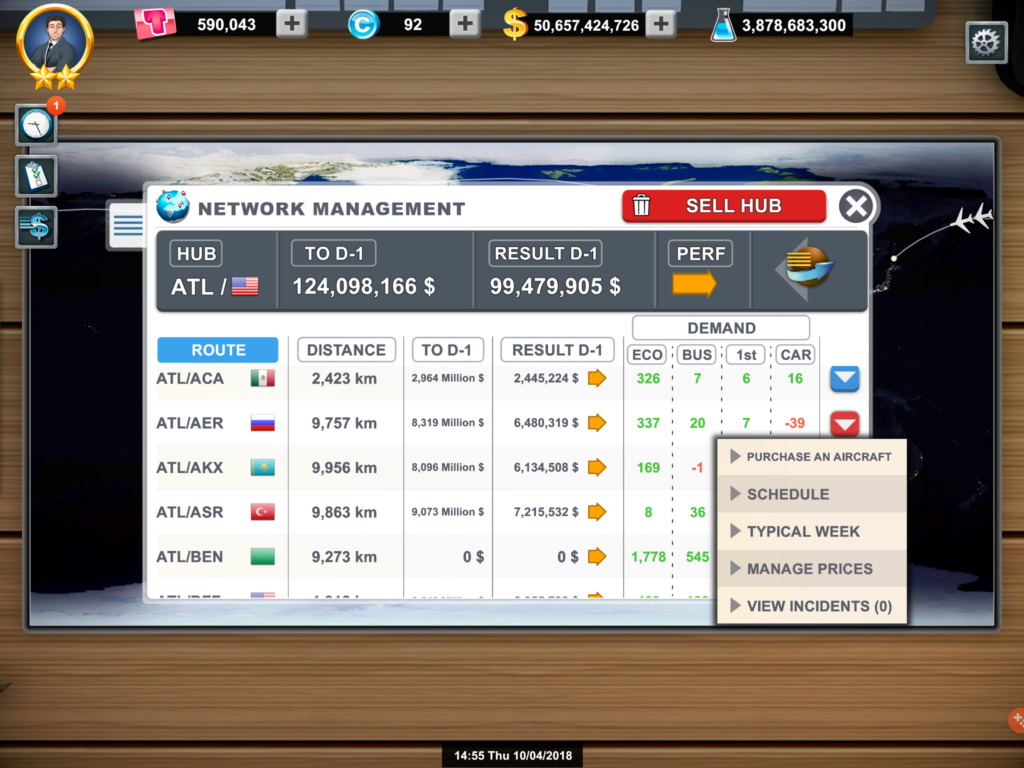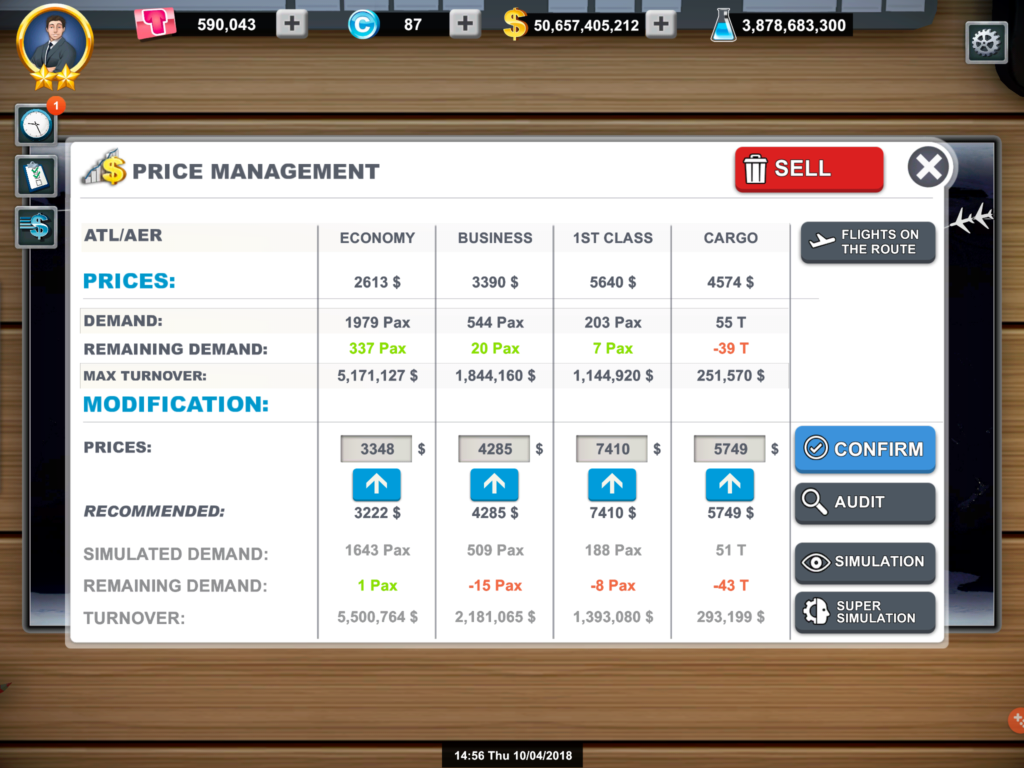This post is also available in:
 Français (French)
Français (French)  Español (Spanish)
Español (Spanish)
The price management allows you to optimize the demand of your routes.
Generally speaking, prices should be changed in the following cases:
1) Setting the ideal price before assigning aircraft to the route.
2) Reaching a demand close to 0 when aircraft are already assigned to a route.
3) Reducing prices to have enough demand to assign a new aircraft to a route.
List of routes

Managing the prices of a route

This window shows two inserts containing all the information you may need to manage your routes in a optimal way.
- Prices: amount of current prices on the route for each class.
- Demand: the number of passengers by class who want to travel via this route with your airline. You can make this total fluctuate by changing your prices and some of your airline characteristics.
- Remaining demand: the number of available seats scheduled on this route, thus it is the maximum number of passengers you can carry on this route with the aircraft which are already scheduled.
- Max turnover: maximum price for each class that each passenger could pay to travel via this route with your airline.
- Change:
- Prices: it is here you can change your prices then confirm or simulate them.
- Recommended: prices recommended by your marketing team after performing an internal audit on the route.
- Simulated demand: prices recommended by your marketing team after performing a simulation.
- Remaining demand: the demand that remains for each class if you apply the prices obtained by the simulated demand.
- Turnover: turnover you could reach if you applied the prices of the simulated demand.
